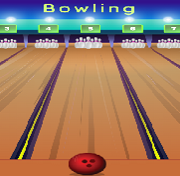Five senses Science Game for Kids
This science game will help kids learn about the five senses.
Benefits of Using Five Senses
We think of the five senses of the human eye: sight, hearing, taste and touch. What are the Five senses of sight? These senses can be learned from both animals and non-humans. These senses can also be used by the body. Below are some examples of how our senses work. All of them play an important role in our daily lives. Continue reading to learn more! Below are some benefits to using the five senses. These are just a few of the ways that the senses can be used.
Senses
The human body is hardwired with the five senses (also known as the five sensitivities). They enable us to perceive and learn about the world around us. The senses can be used to recognize colors and textures, as well as objects. Each sense has a unique "spectrum", or range of frequencies. This varies greatly between species. Each sense can also be associated with a specific feeling or activity. These are just a few examples of how each sense is different from the other.
Another sense is proprioception. It allows us to be aware of our position and movements. It allows us to touch our noses without looking, or climb stairs without looking down. Those with poor proprioception might have trouble with coordination and balance. Because the five senses are interrelated, this is why it is important to understand how they relate. Understanding the interrelated functions of each sense is key to understanding their function.
Our survival and well-being depend on our visual sense. It allows us to locate the body's parts. Close your eyes and rub your nose to test your visual perception. Another source of information is the muscles. The muscles detect tension in the muscles, which allows the brain to regulate that tension. For survival and development, the senses of taste and smell are vital. Not all people have all five senses. People with poor vision might have more sensitive senses of hearing or sight.
Non-human organisms have senses
The senses are the biological systems organisms use in order to perceive and respond with their environment. These sense organs collect information from the environment and relay it to the brain. Modern science has discovered many more senses than the five previously known. Humans are far more aware of their senses than non-humans. Below are some examples of their most basic senses.
Physiological – Many animals use sound to avoid predators. Elephants use vibration to locate food sources and communicate with each other. Electroreception – Some animals have sensors in the jaws and forelimbs. Electroreception is a feature found in bats, bees, and cockroaches. They use the energy produced by their skin to respond to stimuli. Bats are able to taste food and smell toxins in addition to their hearing.
Non-human organisms have senses
The human body's senses
Each person has a different view of the world. Although we may believe we can hear and see, our five senses actually help us to perceive the world around us. The visual sense allows us to see where each body part is in relation to the other. To test your ability to do this, you can close your eyes and feel your nose. This sense can also be used to monitor muscle tension. Our senses help us recognize sounds and smells.
The five senses of the human body include sight, hearing, smell and taste. Through eardrums, sound waves reach our tympanic membrane. This is a thin layer of connective tissue that carries sound waves to our eyes and ears. When sound waves hit it, the membrane vibrates. We can distinguish different types of sound depending on how vibrations impact us. Our eyes can also detect different types of vibrations.
The five senses allow us to recognize different stimuli. These five senses help us make decisions, understand the world around us, and make choices. Researchers believe there may be more senses than nine. Each sense has its own receptors. Touch is the most varied sense, along with taste. Our skin has receptors for light and temperature as well as pressure, pressure, pain, and pressure. Each has its own way of reaching the brain.










